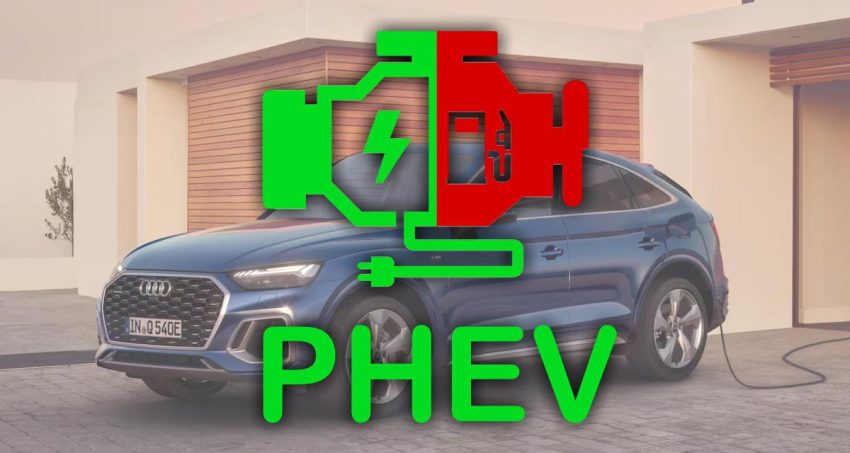In hybrid vehicles, we distinguish two solutions. The first is to have a small electric motor and a modest capacity electric battery that does not need to be recharged. The electric motor helps the heat engine in the critical phases that consume fuel. This allows to reduce consumption a littlebut the savings are marginal.
A vehicle with two faces
The other solution is theplug-in hybrid. It can be found under different names such as “hybrid plugin” or PHEV. Several technical differences distinguish it from simple hybridization. Already, the electric motor can move the vehicle alone, without using the internal combustion engine, petrol or diesel. Then the electric motor (or motors if there are several) is powered by a large capacity battery, 5 to 10 times more than the basic hybrid. Finally, this battery can be rechargedvehicle stationary.
There are several undeniable advantages to driving a plug-in hybrid car. The first of them is to be able to drive tens of kilometers all-electric. In this, the PHEV vehicle behaves like a 100% electric vehicle. The range of typical plug-in hybrids varies between 50 and 75 km. Some posh models even flirt with a hundred kilometers of zero exhaust emissions. It is all the more interesting that you can recharge the battery, in the evening at home, the day at the office, or even outside.
With this mode of operation, the price per kilometer drops drastically. Above all, we are never dry, even in the event of a fuel shortage. The other interest is to be able to use the gasoline or diesel fuel tank to exceed the electric autonomy. Thus, the PHEV achieves the fusion of the two worlds: electrical and thermal. 100% electric for everyday journeys, and thermal and/or hybrid for longer journeys such as holidays, weekends or other.
Avoid the CO2 penalty while having power
Technically, a PHEV is therefore interesting for those who use their car every day for commuting, but also for take long journeys. Financially, it will depend on your use of the car. Indeed, a purely electric vehicle can provide you with the same service, with only one adaptation to be observed for journeys exceeding approximately 500 km. But, if you don’t want to compromise with your freedom of movementthe PHEV may be for you.
PHEVs are often equipped with engines reserved for high finishes cars. This makes it possible to amortize the additional cost with a very equipped vehicle and often with a powerful engine. The rechargeable hybridization technique allows favorable certification and low WLTP CO2 emissions. Thus, we escape the CO2 penalty despite a powerful vehicle. This is an aspect not to be overlooked when considering the purchase of a plug-in hybrid vehicle.
A PHEV will therefore have two faces, both electrical and thermal. It will save you on the CO2 penalty while having a powerful vehicle. Above all, it will allow you to save money every day while driving. 100% electric while being able to “cross France” by refueling in a few minutes if necessary. While waiting for the 100% electric of the next generations, the PHEV is a good compromise that should be seriously considered.



